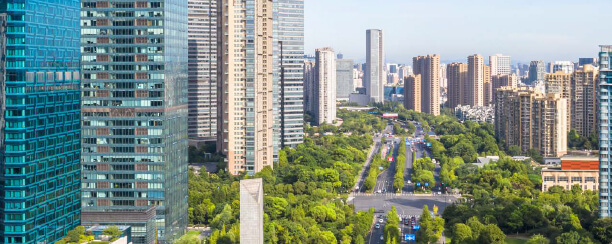Commercial real estate trends that were starting to show some traction before the COVID-19 pandemic (remote work, online grocery shopping, etc.) accelerated quickly in 2020, resulting in seismic changes for commercial real estate. Demands for some property types and assets sharply increased, while others plummeted.
Commercial real estate professionals and brokers anticipate that many of the pandemic-related changes in property demand will last well into the future. The next step is to discover the right opportunities and meet the needs of a post-COVID world, to position themselves for continued expansion and healthy portfolios.
Pre-COVID Commercial Real Estate Trends
Commercial real estate in a pre-COVID world experienced similar changes and demands to what the industry is facing today—the only difference is they were happening much, much more slowly. Changes that were anticipated to take place over about a decade were suddenly condensed into a few months, sometimes even weeks.
Pre-COVID consumer habits were shifting increasingly toward e-commerce, as people found it much easier to purchase goods online. Many workplaces started exploring remote work options to reduce the need for expensive office space and allow employees more flexibility. Home-based workouts like Peloton, Tonal, and digital classes were becoming an attractive alternative to gyms.
The growing preference for e-commerce and its negative impact on retail spaces was high on every CRE professional’s radar, but no one expected to transition to remote work and online grocery shopping so quickly. And while food delivery services were increasing, no one could have predicted the full-stop closure of in-person dining. Demand for big box gyms before the pandemic was declining, but boutique gyms were thriving and even taking over some abandoned retail spaces.
In a pre-COVID world, commercial real estate was facing big changes, but the changes were slow and allowed time for creative problem-solving. Then the events of 2020 happened, and CRE pros had to quickly pivot.
What CRE Professionals Are Looking For In 2021
Industrial, warehousing, and logistics centers became high-demand commercial properties in 2020, and are still going strong now in 2021. The trajectory for these changes had already been in motion, and now consumer habits have shifted in a way that’s unlikely to go back to pre-Covid standards. Industrial properties are expected to provide a bigger return in the coming years than retail, office, or even multifamily according to the Pension Real Estate Association’s consensus forecast.
While Amazon is the clear e-commerce behemoth, Direct-to-Consumer (D2C) retailers skyrocketed during the pandemic and only continue to grow. While smaller than Amazon, these retailers also require warehousing and fulfillment centers.
Ordering groceries and essentials online skyrocketed during the pandemic, with older generations driving the trend in large numbers for the first time. The Baby Boomer generation was expected to adopt online shopping for essentials slowly, however, the pandemic showed this generation that online grocery is easier and keeps them safer than going into stores. Even after the pandemic recedes, this generation will likely continue online shopping for essentials, particularly during cold and flu season. As a result, essential retailers like local grocery stores and superstores like Walmart and Target require more cold storage for perishable goods.
The oversupply of retail was a problem pre-COVID, and small retailers struggled to pay rents once the pandemic set in. Demand for these types of commercial properties declined unless a creative solution was found to make them profitable. For example, small retailers who could pivot into online sales and either home or curbside delivery were able to maintain profitability because they are closer to their communities and can serve them faster. Some developers found that retail spaces could be transitioned into mixed-use, allowing for residential development.
Additionally, adaptive reuse of commercial spaces hit hard by the pandemic, like retail, hotels, and office space is also expected to become more in-demand if they can transition into affordable housing, distribution centers, or warehouses. Restaurateur demand for ghost kitchens skyrocketed, as these commercial spaces allow restaurants to offer robust food delivery while cutting down expenses.
Multifamily has also held strong throughout the pandemic and is expected to continue at a healthy rate of growth. To meet high demand for rental properties, institutional investors are acquiring raw land for the construction of build-to-rent houses in popular suburban locations. A particularly active area is single-family home construction, which hasn’t seen construction levels this high since 2007.
Locate In-Demand Commercial Properties Using LandVision™
LandVision™ is a commercial real estate mapping software by DMP/LightBox and offers commercial real estate developers and investors the ability to zero in on in-demand commercial properties. Easily search for property type, square footage, zoning, nearby points of interest, transit lines, right of way, and much more. View properties on a digital map, and discover optimal sites alongside the data and information you need to acquire in-demand properties in a competitive market.
Click here to contact us and learn how LandVision™ can help your business find the most in-demand commercial sites for optimal profitability.
